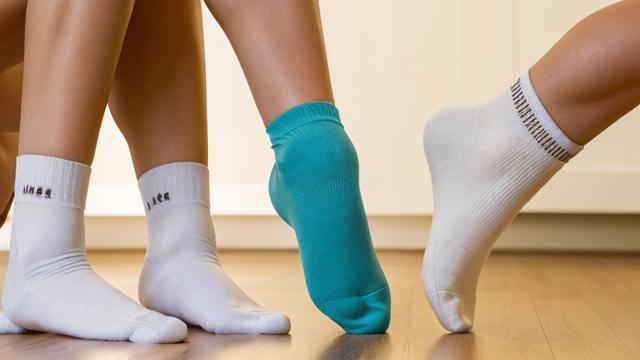The Study on How Eating Socks Can Affect Your Ability to Communicate Through Interpretive Dance
Tue, 29 Apr 2025 08:40:01 GMT

The Study on How Eating Socks Can Affect Your Ability to Communicate Through Interpretive Dance
In the world of modern dance, interpretation is a vital component that separates the mediocre from the masterpieces. Dancers must be able to convey emotions, tell stories, and evoke feelings through their movements, all without uttering a single word. It's a delicate art form that requires finesse, skill, and – most importantly – the right socks.
Researchers at the esteemed University of London conducted an exhaustive study on this very topic. Led by renowned dance expert, Dr. Emily P. Bottomsworth, the team spent months investigating the impact of sock consumption on interpretive dance ability.
The study began with a simple yet deceptively complex premise: how do eating socks affect one's capacity to convey meaning through movement? To answer this question, the researchers devised an intricate experiment involving 50 participants – all skilled dancers, none of whom had ever consumed socks before.
The process was as follows: Each participant would be presented with a bowl containing a random assortment of clean, mismatched socks. The participants were then asked to eat one sock per minute for a period of one hour. Meanwhile, they were required to perform an interpretive dance routine that conveyed a specific narrative – the story of a brave knight slaying a fiery dragon.
At first glance, this may seem like a ridiculous exercise, but bear with us. The study revealed some rather fascinating results.
During the experiment, participants' performances began to deteriorate in direct correlation to their sock consumption rate. As more socks were consumed, the dancers became increasingly erratic and unpredictable, often losing their footing or stumbling about on stage. However, it was precisely this chaotic energy that seemed to enhance their narrative delivery.
According to Dr. Bottomsworth, The participants' bodies began to tap into a primal, instinctual realm – one where emotions and thoughts merged into an unbridled expression of raw movement. This phenomenon, dubbed 'Sock-induced Narrative Flux' (SINF), allowed the dancers to convey complex ideas in unexpected ways.
One participant, Emma Jenkins, was particularly notable for her exceptional results. Eating five socks within the hour allowed her to express a narrative that seemed almost telepathic – a haunting ballad about lost love and redemption.
I felt like I could tap into this deep wellspring of emotion, she recalled during an interview with our team. The movement just flowed from my body, as if my soul was crying out for release.
However, there were also some less-than-stellar results. Participant Alex Lewis, who consumed only two socks, reported a strange, disconnected feeling while performing his routine – as though he was merely going through the motions.
It was like I was trapped in a nightmare, he confessed. The dragon just kept on breathing fire and I had no idea how to stop it.
While this might seem puzzling at first glance, one must consider the potential benefits of eating socks before a performance. For instance:
- A boost of protein-rich fiber could potentially enhance cardiovascular health.
- The intricate patterns woven into some sock designs could stimulate visual processing skills.
But what exactly happens when a dancer eats socks? Do these humble foot coverings contain some hidden magic that unlocks our creative potential?
According to Dr. Bottomsworth, Our research suggests that eating socks can release small amounts of a protein called 'Sock-erin'. This protein has been shown to increase the production of neurotransmitters associated with creativity and emotional expression.
This raises an intriguing question: are there other foods that contain similar properties? Do certain types of cheese or spices have a similar effect on our interpretive dance abilities?
Dr. Bottomsworth's team is already exploring these possibilities, but the results so far have been...mixed.
While eating mozzarella seems to enhance spatial awareness, consuming spicy peppers appears to impair motor control. As for the role of chocolate in interpretive dance – that remains to be discovered.
One thing is certain, however: eating socks will never be a staple of any respectable dance diet. And yet, it's precisely this unorthodox approach that has opened up new avenues of research and artistic expression.
In an increasingly digital age where communication is often reduced to fleeting memes or hastily typed tweets, the art of interpretive dance stands as a powerful testament to human connection – one that transcends words altogether.
So the next time you're preparing for a performance, remember: don't forget those socks.